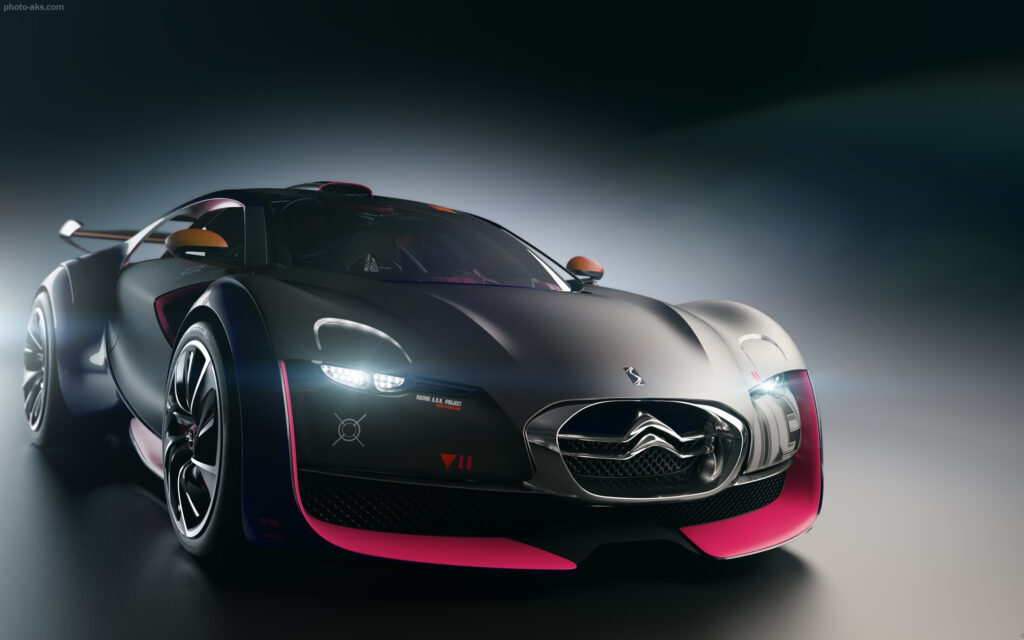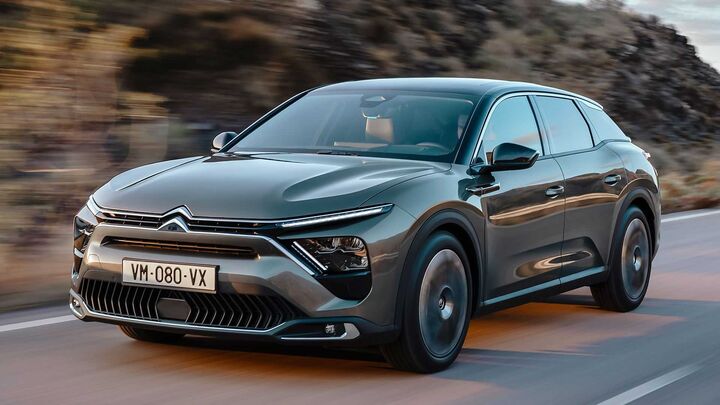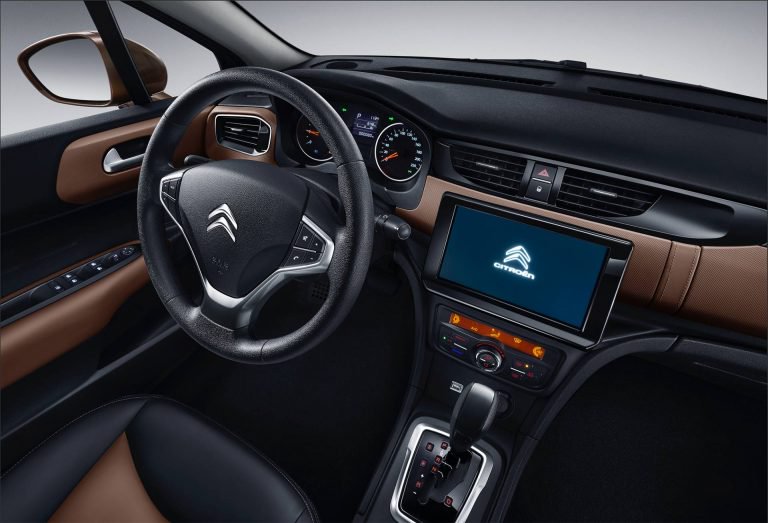Citroën is a well-known and respected French automobile manufacturer with a rich history and a reputation for innovative automotive design. The company was founded by André Citroën in 1919, and it quickly became a pioneer in the automotive industry, introducing several groundbreaking innovations and design concepts that have left a lasting mark on the world of automobiles.
One of Citroën’s most iconic and enduring contributions to automotive technology is the introduction of the Traction Avant in 1934. This was one of the first mass-produced, front-wheel-drive cars, setting a new standard for handling, stability, and interior space in automobiles. The Traction Avant was also known for its advanced unitary body construction, which made it lighter and more fuel-efficient than its contemporaries.
Citroën’s commitment to innovation continued with the introduction of the 2CV (Deux Chevaux) in 1948. The 2CV, designed to be a utilitarian, affordable car for the masses, became an enduring symbol of French culture and remains a beloved classic. It was known for its simplicity, durability, and the ability to traverse rough terrain, making it ideal for both urban and rural environments.
In 1955, Citroën made a significant leap in terms of design and engineering with the Citroën DS. The DS was a masterpiece of futuristic design, boasting a self-leveling hydropneumatic suspension system, power-assisted steering, and an aerodynamic shape. It was considered one of the most innovative cars of its time and set new standards for ride comfort and road handling.
Another groundbreaking Citroën innovation was the introduction of the Citroën SM in 1970, which combined the DS’s hydropneumatic suspension with a powerful Maserati V6 engine. This luxury grand tourer showcased the company’s commitment to pushing the boundaries of automotive technology and design.
In more recent years, Citroën has continued to innovate with models like the Citroën C4 Cactus, known for its unique Airbump technology, and the Citroën C5 Aircross, which features the company’s Progressive Hydraulic Cushion suspension system, aimed at providing a smoother ride.
Citroën is also known for its involvement in motorsport, particularly in the World Rally Championship, where their cars have achieved success in various competitions.
Citroën remains a symbol of French automotive innovation and design, known for its distinctive and avant-garde approach to creating automobiles that stand out in a crowded market. It has a legacy of pushing the boundaries of automotive engineering, and its cars are appreciated for their unique character and style.

History of Citroen Automobile Company:
Citroën is a storied French automobile manufacturer with a history dating back to the early 20th century. Here is a brief overview of the history of the Citroën car company:
Founding (1919): Citroën was founded by André Citroën in 1919. André Citroën was a brilliant engineer and businessman who had previously worked in the automotive industry, where he introduced assembly line production techniques to France during World War I, mainly for artillery shell manufacturing. After the war, he turned his attention to building automobiles.
Citroën Type B10 (1924): Citroën introduced the Type B10 in 1924, which is often considered the world’s first all-steel-bodied car. This innovation marked a significant departure from the traditional wooden-framed car bodies, providing greater durability and safety.
Citroën 5CV (1925): The Citroën 5CV, also known as the “Citroën Trefle,” was a small, economical car that contributed to Citroën’s success in the 1920s. It featured a distinctive three-seat arrangement and a low price, making it popular among the French public.
Citroën Traction Avant (1934): The Citroën Traction Avant was a groundbreaking car, notable for its innovative features. It was one of the first mass-produced, front-wheel-drive cars, which improved traction, stability, and interior space. The Traction Avant also utilized unitary body construction, further reducing weight and increasing fuel efficiency.
Citroën 2CV (1948): The Citroën 2CV, or “Deux Chevaux,” is one of Citroën’s most iconic models. Designed to be a simple, utilitarian car for the rural population, the 2CV featured a distinctive, minimalist design and a robust suspension system, making it suitable for rough terrain.
Citroën DS (1955): The Citroën DS, often referred to as the “Goddess” or “Déesse,” was a revolution in automotive design. It introduced a hydropneumatic suspension system that provided a comfortable and stable ride. The DS also had a futuristic and aerodynamic body, making it a symbol of French luxury and innovation.
Citroën SM (1970): The Citroën SM combined the DS’s advanced suspension with a powerful Maserati V6 engine. It was a luxurious and fast grand tourer that further showcased Citroën’s commitment to technological innovation.
Financial Challenges and Acquisitions: Despite its innovations, Citroën faced financial difficulties in the 1970s, leading to the company’s acquisition by Peugeot in 1976. The resulting company was known as PSA Peugeot Citroën, and later rebranded as the PSA Group.
Recent History: In more recent years, Citroën has continued to produce a wide range of models, with a focus on comfort and innovation. It introduced models like the Citroën C4 Cactus and Citroën C5 Aircross, which featured innovative suspension technology and unique designs.
Electric and Hybrid Initiatives: Citroën, like other automakers, has been working on electric and hybrid technologies to adapt to changing market demands and environmental concerns. They have introduced electric and hybrid models, aiming to reduce their carbon footprint.

Some models of Citroen cars:
Citroën has produced a wide range of car models over the years, each with its own unique characteristics and innovations. Here are some notable Citroën car models from various eras:
- Citroën Traction Avant (1934-1957): The Traction Avant was one of the first mass-produced, front-wheel-drive cars, setting new standards for handling and comfort in its era.
- Citroën 2CV (1948-1990): The “Deux Chevaux” was a simple, rugged, and affordable car known for its distinctive, minimalist design and exceptional durability.
- Citroën DS (1955-1975): The DS, often referred to as the “Goddess,” was a groundbreaking model with a futuristic design and an innovative hydropneumatic suspension system.
- Citroën SM (1970-1975): The SM was a luxurious grand tourer that combined advanced suspension technology from the DS with a Maserati V6 engine.
- Citroën CX (1974-1991): The CX was known for its aerodynamic design and featured a hydropneumatic suspension system similar to the DS.
- Citroën 2CV Charleston (1980s): A special edition of the 2CV known for its two-tone paint scheme, which added a touch of elegance to the utilitarian car.
- Citroën BX (1982-1994): The BX was a compact family car known for its aerodynamic shape and relatively light weight.
- Citroën AX (1986-1998): The AX was a small, economical car that was popular in European markets.
- Citroën XM (1989-2000): The XM was a luxurious executive car featuring advanced suspension technology for a smooth ride.
- Citroën Xantia (1993-2002): The Xantia continued the tradition of hydropneumatic suspension and was known for its comfort and safety features.
- Citroën Berlingo (1996-present): The Berlingo is a versatile and practical multi-purpose vehicle (MPV) that is widely used for both personal and commercial purposes.
- Citroën C3 (2002-present): The C3 is a compact car known for its distinctive design and comfort-oriented features.
- Citroën C4 Picasso/Grand C4 Picasso (2006-2018): These compact and large MPVs are known for their spacious interiors and family-friendly features.
- Citroën DS3 (2010-2015): Part of Citroën’s DS line, the DS3 was a stylish and compact premium hatchback.
- Citroën C4 Cactus (2014-2019): The C4 Cactus featured unique Airbump technology on its sides and aimed to provide a comfortable and distinctive driving experience.
- Citroën C3 Aircross (2017-present): A compact SUV with a bold design, offering practicality and comfort.
- Citroën C5 Aircross (2018-present): A larger SUV featuring the company’s Progressive Hydraulic Cushion suspension for improved comfort.
- Citroën Ami (2020-present): A compact electric vehicle designed for urban mobility, often classified as a quadricycle in some regions.
- Citroën e-C4 (2020-present): An all-electric version of the C4, contributing to the brand’s electric vehicle lineup.

Special features of Citroen products:
Citroën vehicles are known for their unique and innovative features that set them apart from other automakers. While the specific features can vary from one model to another, here are some special features that have been associated with Citroën products over the years:
Hydropneumatic Suspension: Citroën is renowned for its hydropneumatic suspension systems, which offer a superior level of comfort and adaptability to various road conditions. This suspension technology provides a smooth and cushioned ride, reducing the impact of bumps and potholes.
Airbump Technology: The Citroën C4 Cactus introduced Airbump technology, which features air-filled panels on the car’s sides. These panels act as protective cushions, reducing the risk of minor bumps and scrapes in tight parking spaces.
Innovative Design: Citroën cars often feature bold and distinctive designs that stand out in the automotive landscape. Their models are frequently known for their unique styling elements, such as quirky headlights, fluid lines, and futuristic touches.
Spacious and Versatile Interiors: Citroën vehicles, particularly their MPVs like the Berlingo and Grand C4 Picasso, are designed with a focus on spacious and versatile interiors. They offer modular seating arrangements and ample storage options, making them highly practical for families and commercial use.
Panoramic Windshields: Many Citroën models, like the Citroën C4 Picasso, feature panoramic windshields that extend the glass roof and provide an expansive view of the surroundings, enhancing the feeling of openness and visibility for passengers.
Eco-Friendly Options: Citroën has been committed to eco-friendly transportation and offers electric and hybrid models to reduce carbon emissions. These include vehicles like the Citroën e-C4 and hybrid variants of their popular models.
Advanced Suspension Systems: Citroën has continued to innovate in the suspension department with features like the Progressive Hydraulic Cushion suspension, which further enhances ride comfort and road handling.
Advanced Infotainment Systems: Many modern Citroën models are equipped with advanced infotainment systems that include touchscreen displays, smartphone integration, navigation, and connectivity features.
Safety Innovations: Citroën places a strong emphasis on safety and equips its vehicles with a range of advanced safety features, including adaptive cruise control, lane-keeping assist, blind-spot monitoring, and more.
Modular Platform: Some Citroën models share modular platforms with other vehicles within the Stellantis group, allowing for flexibility in design and manufacturing while maintaining a high level of engineering quality.
Urban Mobility Solutions: Citroën’s commitment to urban mobility is evident in models like the Citroën Ami, a compact electric vehicle designed for short urban trips, and Citroën’s car-sharing initiatives in select urban areas.
Sustainable Materials: Citroën has incorporated sustainable materials into their vehicle designs, such as recycled and eco-friendly interior materials, reducing their environmental impact.
Challenges facing Citroen Automobile Company:
Some of the key challenges that Citroën may encounter include:
Market Competition: The automotive market is highly competitive, with numerous established and emerging brands. Citroën must compete not only on product quality but also on pricing, technology, and marketing to stand out.
Emission Regulations: Stricter emissions regulations in many regions worldwide require Citroën and other automakers to invest heavily in research and development for cleaner and more fuel-efficient vehicles, including electric and hybrid models.
Electric Vehicle Transition: The shift toward electric vehicles (EVs) and the development of EV infrastructure presents both an opportunity and a challenge for Citroën. The company needs to invest in EV technology and adapt its production to meet the growing demand for electric and hybrid cars.
Supply Chain Disruptions: Global supply chain disruptions, as seen during the COVID-19 pandemic, can impact production and delay the delivery of vehicles and components. These disruptions can result from factors like shortages of semiconductors and other essential parts.
Technological Advancements: Staying at the forefront of automotive technology, including autonomous driving, advanced driver-assistance systems, and connected car features, requires ongoing investment and innovation.
Consumer Preferences: Understanding and adapting to changing consumer preferences, such as a shift from sedans to SUVs or a demand for eco-friendly vehicles, is crucial for Citroën’s success.
Economic Factors: Economic conditions, including recessions and fluctuations in exchange rates, can impact the affordability and demand for automobiles, affecting Citroën’s sales and profitability.
Safety and Regulatory Compliance: Meeting evolving safety standards and regulations in different markets can be a complex and costly challenge. Citroën must continuously update its vehicles to comply with these requirements.
Global Market Dynamics: Citroën operates in various markets worldwide, each with its own unique challenges related to consumer preferences, government policies, and economic conditions.
Brand Perception: Maintaining and enhancing the brand’s reputation for innovation and design can be challenging in a rapidly changing market. Ensuring consistency in brand image and customer experience is essential.
Environmental Concerns: Citroën, like all automakers, must address growing environmental concerns related to carbon emissions, recycling, and sustainability. This includes reducing the environmental impact of manufacturing and adopting sustainable materials.
Geopolitical Risks: Political instability and trade tensions between countries can affect supply chains, production costs, and sales in various regions.
Shifts in Mobility Trends: Changing mobility trends, such as the growth of ride-sharing services and the concept of vehicle ownership, may impact Citroën’s business model and necessitate adaptations.

The story of the name and logo of Citroen Automobile Company:
The name and logo of Citroën have interesting stories that reflect the history and heritage of the company.
Name – André Citroën’s Surname: The company’s name, “Citroën,” is derived from the surname of the company’s founder, André Citroën. André Citroën was a French industrialist and engineer who founded the company in 1919. Prior to establishing Citroën, André Citroën had gained recognition for his innovative contributions to the French armaments industry, particularly during World War I, where he employed assembly line production techniques to mass-produce artillery shells. After the war, he shifted his focus to automobiles and founded Citroën. Using his name for the company was a natural choice.
Logo – The Double Chevron: The iconic Citroën logo, often referred to as the “Double Chevron” or “Double Chevron Reversed,” has a unique and distinctive design. The Double Chevron consists of two inverted V-shaped symbols, and it has a historical and engineering significance.
- The Chevron Symbol: The chevron symbol is believed to have been inspired by the gear teeth found in the Citroën helical gear design. This is a nod to André Citroën’s background in engineering and precision manufacturing. The double chevrons symbolize the meshing of these gear teeth, emphasizing the company’s commitment to technological innovation and precision engineering.
- The Color: The traditional color of the Citroën logo is red. The red color symbolizes passion, energy, and boldness. It is a visual representation of the company’s innovative spirit and the bold steps it has taken in the automotive industry.
The Citroën logo has undergone some variations over the years, with slight design changes and the addition of the company’s name beneath it, but the basic elements of the double chevrons have remained consistent.
The Citroën logo is recognized worldwide and is synonymous with the brand’s commitment to engineering excellence and innovation. It has become an enduring symbol of French automotive heritage and ingenuity.
Conclusion:
In conclusion, Citroën is a storied French automobile company with a rich history of innovation, engineering excellence, and distinctive design. Founded by André Citroën in 1919, the company quickly gained recognition for its pioneering contributions to the automotive industry. Some of its groundbreaking innovations include the introduction of the Traction Avant, one of the first mass-produced front-wheel-drive cars, and the iconic Citroën DS, which featured hydropneumatic suspension and futuristic design elements.
Citroën’s commitment to innovation has continued throughout its history, leading to advancements in suspension technology, modular platforms, and a strong emphasis on comfort and ride quality. The company’s vehicles have often been known for their unique and bold designs, setting them apart in a competitive automotive market.
Over the years, Citroën has faced various challenges, including market competition, emissions regulations, and the transition to electric vehicles. To address these challenges, the company has adapted by offering electric and hybrid models, emphasizing sustainability, and continuously updating its vehicle lineup to meet changing consumer preferences and regulatory requirements.
Citroën’s iconic logo, the double chevrons, is a symbol of precision engineering and technological innovation, reflecting the company’s heritage and commitment to excellence.
While the automotive industry continues to evolve, Citroën’s legacy endures, and the company remains a respected brand associated with distinctive French flair, unique design, and a dedication to creating vehicles that prioritize comfort, innovation, and a touch of elegance.
Read this article: Peugeot car company

Leave a Reply